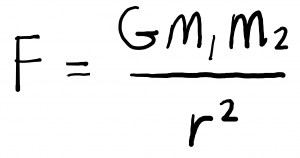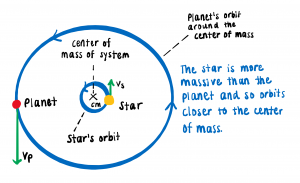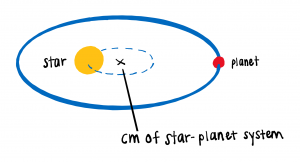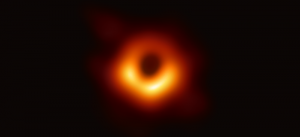You might be wondering… why do planets move across space? Why does the earth remain in orbit? How come the moon cannot fall to the earth?
These questions are all answered by the study of gravitation and the universal laws of gravitational attraction, formulated by Isaac Newton and Johannes Kepler.
Physics of Planetary Interactions
This is an accordion element with a series of buttons that open and close related content panels.
Newton’s Law of Universal Gravitation
The gravitational attraction between any two objects is directly proportional to both object’s masses and inversely proportional to the distance between them. Learn more about Newton’s Law and how this impacts planetary interactions.

The Importance of Gravitational Forces
Gravitation is responsible for holding the earth together and maintaining the orbital paths of planets in the solar system. Gravity affects all movement through space because every object exerts a gravitational force on all other objects. As one of the four fundamental forces of nature, it is required to form entire galaxies and solar systems.

The gravitational attraction between different parts of the sun causes compression at the sun’s core to high temperatures and densities, which makes it possible for nuclear reactions to occur. These reactions generate an energy output essential for the existence of life on earth.
Kepler’s Laws
First law: Planets move in elliptical orbits with the sun at one focus of the ellipse.
Second law: A given planet covers the same area of space in the same amount of time, regardless of orbit location.
Third law: The average distance of a planet from the sun cubed is proportional to the orbital period squared.
Discover applications of Kepler’s three laws of planetary motion here.
Planetary Motion and the Center of Mass
Newton’s analysis of planetary motion showed that objects in the universe obey the same laws of motion as objects on earth, in that they move around a common center of mass. It is incorrect to say that the moon orbits the earth; in reality, both the earth and the moon orbit around their common center of mass.

These images depict the circular orbits of a planet and a star. The size of each orbit depends on the mass of the object. In this case, the star is more massive than the planet, and therefore, it has a smaller orbit that is closer to the common center of mass. The mass of the planet relative to the star is much lighter, resulting in a larger orbital path for the planet.
This concept requires the star and the planet to always be located on opposite sides of the common center of mass when in orbit.
Black Holes
Black holes are objects whose gravitational influence is so great that nothing, including light, can escape. An object will act as a black hole if its radius R is less than or equal to a critical radius known as the Schwarzschild radius, Rs.
The event horizon is a boundary or region of space just outside a black hole. As you approach a black hole, an effect known as the gravitational redshift takes place, as defined by Einstein’s general theory of relativity. This illustrates the concept of time dilation. In other words, from the point of view of an outside observer, the biological and electronic clocks appear to run with increasing slowness.

From your perspective, reaching the event horizon would occur over a much shorter period of time. However, differences in gravitational pull on various parts of your body would compress you until you are completely perpendicular to the black hole. These forces are known as tidal forces, which catalyze your breakdown into atomic particles (and the atoms themselves are broken apart, as well) before you are even able to reach the event horizon. Quite daunting!
Above and Beyond
Ready to apply Newton’s Law of Gravitation and Kepler’s Laws on your own? Try the practice problems below!
(1) Saturn has a mass that is approximately 95 times the mass of the earth. The distance between Saturn and the sun is about 10 times the distance between the sun and earth. What is the force between Neptune and the Sun? The gravitational force between the sun and earth is 3.5 x 1028 N.
(2) Pluto has an orbital period of 240 years and an average orbital eccentricity of 0.2488. Find the semi-major axis of its orbit.
(3) Venus has a mass that is 0.815 times the mass of the earth and a radius that is 0.950 times that of the earth. Compared to the earth’s surface gravity, what is the surface gravity on Venus?
(4) Uranus has 27 moons. The innermost moon, Miranda, has an average orbital period of 1.413 days and a radius of 235 km. Another moon, Ariel, orbits with an average radius of 360 km. What is the predicted orbital period of Ariel?
For question answers, visit the following page.
